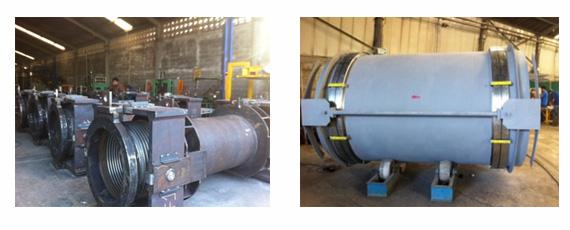Installation Instructions
Installation and Maintenance Instructions for Single-Ply and Multi-Ply Expansion Joints
- Piping system must be adequately anchored and guided to limit piping movements the expansion joint must absorb. See EJMA Standard [Expansion Joint Manufactures Association] for anchor and guide spacing requirements.
- Be sure all pipe lines are supported such that the expansion joint does not carry the pipe load.
- Operating conditions must be within the limits specified in the catalog and/or drawing.
- Install expansion joints with the neutral face-to-face dimensions as shown on the submittal drawing.
- If the expansion joint must be installed with an initial misalignment, compression, and/or expansion, then the maximum allowable movements are reduced by the amount of the initial deflection.
- CAUTION: The expansion joints are not design for reacting to torque or absorbing torsion movements (in a plane perpendicular to the centerline). Be certain that these conditions do not exist due to system design or installation misalignment.
- Shipping restraints may be welded or threaded into place at the factory to insure installation at the correct length and alignment. Whenever possible leave these restraints in place during installation. However they must be removed before operating the system.
- Tie rods or control rods may be included on some expansion joints. They are designed to (1) limit over-travel (2) absorb pressure thrust from the expansion joint in the event of the main anchor failing (3) to absorb pressure thrust for systems design for lateral movement only and no anchors are provided in the system. Note: The system design should be carefully reviewed for correct use of these rods. They can restrict the expansion joints travel is used incorrectly.
- WARNING: Provide protection to the thin wall expansion joint corrugations during the removal of the shipping restraints whenever cutting or grinding. Sparks can damage the corrugations.
- Flow liners or sleeves that extend through the bore of the connector are included in some designs. A marking indicating the flow direction shall be provided on the external surface of the expansion joint to indicate the designed flow direction. The expansion joint must be installed as directed. If there is any possibility of reverse flow or entrapment of material behind the liner/sleeve the design engineer or PisaFlex representative should be consulted before operating the system.
- All expansion joints are tested to 1.5 times the designed operating pressure. System tests should not exceed this pressure.














